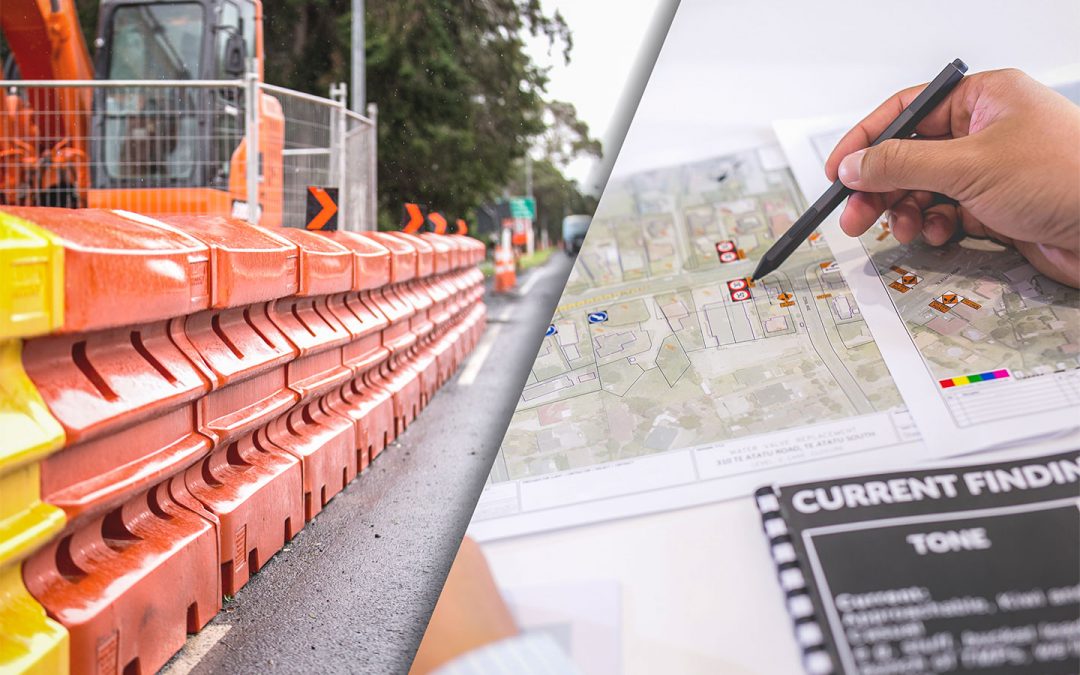Generally, when someone begins their journey in the TTM and roading industry, one would generally start on the road. Not me – here is how I did it and what I have learnt along the way.
I first started in the hire industry roughly 10 years ago. This was in the head office of a large national hire company in New Zealand, so apart from reading the odd invoice with “boom lift” or “excavator “on it (which was basically a foreign language to me at the time), I did not get much of an idea of what the industry was truly about. Fast forward 6 odd years and I found myself at another hire company. This was a smaller company with a specific range of equipment. During my time there, I was working a lot closer to the equipment and directly with high profile clients regarding their bookings and requirements, so I really had to know what I was talking about.
I started dealing with VMS boards, road signs, cones, portable traffic lights and all sorts of steel and water fill barriers. I was witnessing barrier installations, learning the programming of portable lights, and even installing VMS boards every now and then. I learnt the ins and outs of the equipment, as it is what I sold.
Although I had extensive knowledge on how this equipment functioned, or what it needed to operate efficiently, I really had no knowledge of the requirements and work that goes into getting this equipment approved to even be on the road.
Here is where the dots are finally starting to join.
I started at Parallaxx in the TMP / finance team. Finance was almost like a second language to me so that came easy, but the TMP side, was a whole new world. I found out what a TMP really was (even just the basics, such as what T.M.P stood for). The closest I had ever come to seeing a TMP was receiving a TMD for a VMS board plan, but I did not realise that was part of something bigger. (The TMP).
I learnt the steps of creating a TMP, what the proformas are for, and how these are uploaded to the roading authority for approval before any works could start. I learnt why TMPs were so important, and how they benefit New Zealand as a whole, not just for the safety of pedestrians and road users, but for the safety of the road workers too.
Whilst uploading and working with various TMP’s, I started to see TMD’s that included barriers, VMS boards, PTLs, and all sorts of equipment that I hired out. This is where I started connecting the dots. I was learning the specific requirements that had to be met for on road equipment to be approved on the road. I was learning why the particular placement of barriers / PTLs, or VMS boards were so important and how these locations and even messages were calculated.
From here, I went on to on road training. I then trained as a L2/3 STMS, TMO and refreshed at the level of STMS Cat A/B/C. This was a big eye opener as I now understood more than just the TMP side and roading equipment, but also the team make up required for a specific site, or the roles and regulations of each team member.
I am now the Training and Hire Team Leader, and I hope to educate and help my staff understand each piece of the puzzle and have a solid understanding of how each role and activity fit together in the bigger picture.
So much precision and thought has gone into New Zealand’s roading industry, I never realised how lucky we are to have such precise health and safety regulations to protect road users, workers, and pedestrians.
The industry is consistently changing and upgrading, so if you are ever in doubt of what TTM qualification you require, what equipment would best suit your site, or even just have a few questions, please do get in touch via phone, email or live chat on our website. Parallaxx ensure no stones are left un-turned when it comes to training, safety, and regulations, so we are more than happy to assist!
Need someone to assist you with your traffic impact assessment? talk to us and we’ll help you get it sorted
